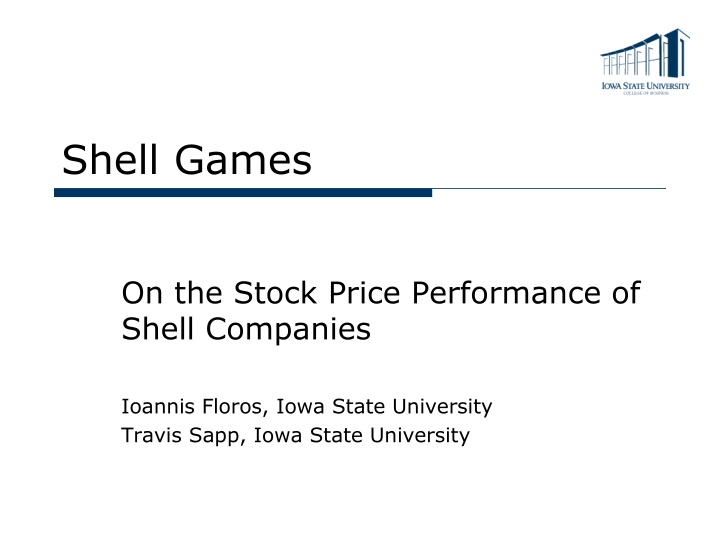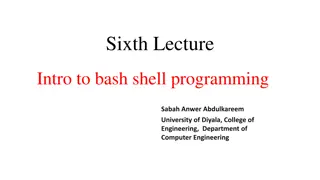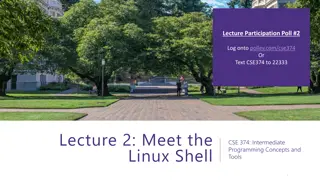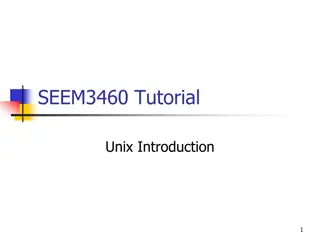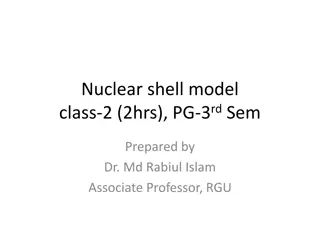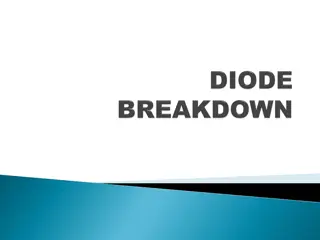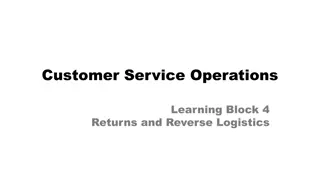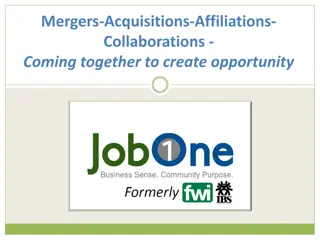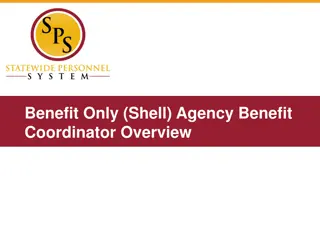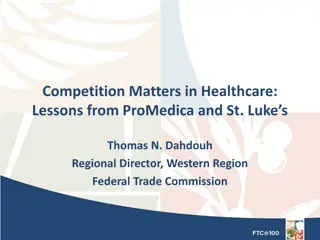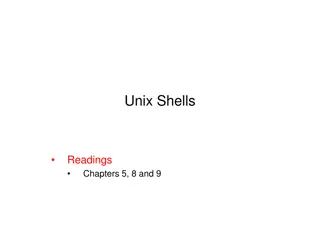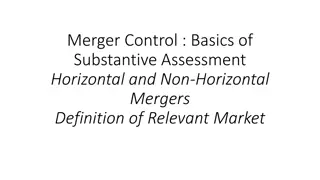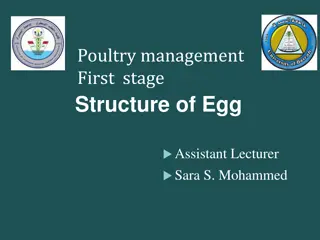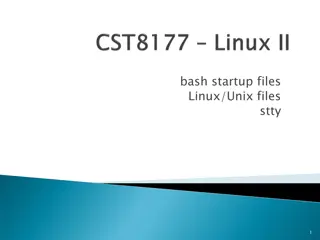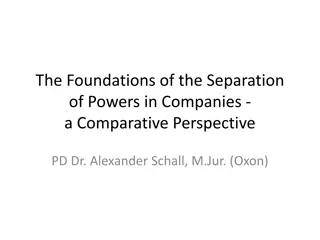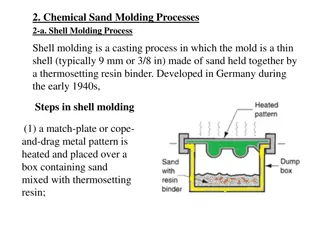Shell Companies and Reverse Mergers: A Comprehensive Study
In this study, the authors delve into the intricate world of shell companies and reverse mergers, shedding light on their impact on stock price performance. The research explores the differences between traditional IPOs and RMs, highlighting the advantages and considerations for investors. Through analyzing the motivations behind investing in shell firms without assets or operations, the study aims to uncover the rationale and potential benefits for shareholders. With a focus on the evolving landscape of public offerings and market dynamics, this investigation offers valuable insights into the realm of shell companies and their role in corporate finance.
Download Presentation

Please find below an Image/Link to download the presentation.
The content on the website is provided AS IS for your information and personal use only. It may not be sold, licensed, or shared on other websites without obtaining consent from the author.If you encounter any issues during the download, it is possible that the publisher has removed the file from their server.
You are allowed to download the files provided on this website for personal or commercial use, subject to the condition that they are used lawfully. All files are the property of their respective owners.
The content on the website is provided AS IS for your information and personal use only. It may not be sold, licensed, or shared on other websites without obtaining consent from the author.
E N D
Presentation Transcript
Shell Games On the Stock Price Performance of Shell Companies Ioannis Floros, Iowa State University Travis Sapp, Iowa State University
Public Offerings by Type 800 700 600 500 400 300 200 100 0 1990 1991 1992 1993 1994 1995 1996 1997 1998 1999 2000 2001 2002 2003 2004 2005 2006 2007 2008 Years IPOs Penny Stock IPOs Reverse Mergers Sellouts
Reverse Mergers Called reverse because the shell firm is taken over, but survives the private company through its public status. In the last few years, reverse mergers (RMs) have become an important alternative to traditional IPOs, and shell companies constitute an integral part of RM transactions. There are five primary advantages to an RM vs. an IPO Quicker by 2-12 months Less expensive by $200,000-300,000 in direct costs Market timing is unimportant Less demanding on management s time Current owners own a majority of the public company
Shell Companies In June 2005, the SEC defined any company with no or nominal operations, and with no or nominal assets or assets consisting solely of cash and cash equivalents as a shell company Shell firms are traded either on the OTC Bulletin Board or through Pink Sheets Virgin shells Development Stage shells Natural shells Trading shells sell for around $1,000,000 Virgin shells sell for around $100,000
Shell Reverse Mergers 250 234 227 213 210 200 204 150 100 71 50 54 46 46 0 2000 2001 2002 2003 2004 2005 2006 2007 2008
Motivation Investors hold stock in trading shell firms. About half of all trading shell firms conduct a RM in a given year. Questions Is it rational to invest in a firm with no assets or operations? Do investors in trading shell companies earn a positive return over time? If not, why invest in a shell firm? Do shell investors benefit from a reverse merger agreement, and if so, by how much? Do shell companies provide any certification for the reverse merger transactions they engage in?
Data We obtain a proprietary detailed database of all reporting shell companies and their characteristics from DealFlow Media/PrivateRaise Data fields include date of incorporation, date of latest filing, origin (natural, development stage, or virgin), current number of shareholders, current number of authorized shares, current number of shares outstanding, and state of incorporation Shell firms trade on the OTCBB and Pink Sheets Returns and volume data not available on CRSP We obtain prices, bid-ask quotes, and volume from ThomsonOne/DataStream Financial information is gathered from Thomson One/Worldscope
Data We obtain market data on 287 trading shell firms over the period 2006-2008 (only 637 have tickers). We further obtain from DealFlow Media/PrivateRaise a listing of 444 shell reverse mergers taking place in 2007- 2008. We obtain market data on 298 of these firms. We hand-collect all letter of intent announcements We find LOI dates for 75 firms We conduct two event studies 1. The letter of intent announcement 2. The actual reverse merger effective date We use the combined sample of 585 shell firms to compute performance and conduct a hazard analysis of the RM event
Distribution of Share Prices 0.25 0.20 0.15 Frequency 0.10 0.05 0.00 0.1 0.3 0.5 0.7 0.9 1.1 1.3 1.5 1.7 1.9 2.1 2.3 2.5 More Share Price ($)
Distribution of Quoted Half Spreads 0.18 0.16 0.14 0.12 Frequency 0.10 0.08 0.06 0.04 0.02 0.00 5 10 15 20 25 30 35 40 45 50 55 60 65 70 75 80 85 90 95 100 Spread (%)
Shell Size and Volume The mean (median) market cap is $14.89M ($2.74M) The time series average daily volume is 210,000 shares. However, the average volume each day is highly positively skewed. The median daily volume is zero on all but two days of the sample period. On average 23% of shells trade on a given day. One reason these stocks are so thinly traded is the concentration of ownership. The mean number of shareholders per firm is 309 and the median is only 57 On average 12% of shell outstanding shares are held by shell managers
The Impact of Bid-Ask Bounce One difficulty in computing the returns of smaller illiquid companies is the potential for bid-ask bounce to distort the return measured from trade prices. Mean Return based on Daily Prices Mean Return based on Daily Midquotes Mean (%): 0.85 0.20 T-stat: 15.63 4.88 EAR (%): 746.4 63.9 Computing returns from the midpoint of daily closing bid-ask quotes effectively removes microstructure noise. However, we find another bias at work in the returns
A Typical Shell: WTMK The arithmetic mean daily return is 0.31% (118% per year). The geometric mean daily return is -0.50% (-72% per year). 0.60 0.50 0.40 Share Price (Dollars) 0.30 0.20 0.10 0.00 4/06 7/06 10/06 1/07 4/07 7/07 10/07 1/08 4/08 7/08 10/08
Shell Firm Systematic Risk We regress the equal-weighted portfolio of shell firm daily returns over 2006-2008 on the three Fama-French factors augmented with a momentum factor: = + + + + + r RMRF SMB HML UMD e , , 1 , 2 , 3 , 4 p t p p t p t p t p t pt Results: Intercept 0.182 (4.50) RMRF 0.020 (0.70) SMB 0.006 (0.10) HML 0.067 (0.83) UMD 0.009 (0.19) R2 0.003 We also regress shell returns on the Pastor and Stambaugh (2003) monthly liquidity factor. The coefficient is not significant.
Shell Firm Idiosyncratic Risk There is uncertainty about whether a suitor can be found. Only 50% conduct a RM each year. Shell firms burn cash. Shell stock prices tend to decay rapidly. Out of our sample of 287 shell firms that do not find a suitor, 29 firms stock prices decline to zero during 2006- 2008.
Explaining Shell Investment Why do shell firms attract investors? There are no operations or assets. The liquidation value is approximately zero. We hypothesize that investors buy shares in anticipation of an eventual reverse merger deal and substantial return. We next examine whether this expectation is rational.
Reverse Merger Cumulative Abnormal Returns 60 Event Window [-30, -1] [0, +30] [-30, +30] [-5, +5] CAR 15.40 32.68 48.08 28.94 t-stat 2.74 6.32 6.30 6.15 50 40 Percent 30 20 10 0 -30 -25 -20 -15 -10 -5 0 5 10 15 20 25 30 Event Time
Reverse Merger Long-Run Returns The average annualized buy-hold return for the post-event window [+31, +390] is -91.2% (t-statistic = -12.50). 70 60 50 40 Percent 30 20 10 0 -30 0 30 60 90 120 150 180 210 240 270 300 330 360 390 Event Time
Letter of Intent Announcement Some shells announce through a letter of intent that they have entered reverse merger negotiations. We conduct an event study on the letter of intent announcement. We find 75 total LOI dates, but 26 of these fall within 30 days prior to the actual reverse merger. Therefore, we use only the remaining 49 announcements for the event study. We look at the window from 30 days prior to the announcement to 30 days after.
Letter of Intent Announcement CARs Event Window CAR t-stat 60 [-30, -1] 26.15 2.91 [0, +30] 27.82 2.85 50 [-30, +30] 53.97 4.07 40 [-5, +5] 35.70 3.72 Percent 30 20 10 0 -30 -25 -20 -15 -10 -5 0 5 10 15 20 25 30 Event Time
Reverse Merger CARs for 49 Firms that Issued a LOI 30 Event Window [-30, +30] [-5, +5] [-2, +2] CAR 17.40 18.91 18.37 t-stat 1.33 2.10 2.66 25 20 15 Percent 10 5 0 -5 -30 -25 -20 -15 -10 -5 0 5 10 15 20 25 30 Event Time
Liquidity Surrounding a Reverse Merger Daily trading volume The average daily volume prior to the event date is 15,100 shares. The average after the event date is 28,800 shares. The difference is 13,700 shares (t-statistic = 7.02) Percentage of firms trading each day The average percentage of firms trading prior to the event date is 34.6%, and after the event date is 52.7%. The difference is 18.2% (t-statistic = 22.50) Quoted spreads Spreads decline in both absolute and percentage terms surrounding the merger agreement. The mean prior to the event date is 18.4%, and the mean after the event date is 14.9%. The difference is 3.5% (t-statistic = 30.10)
Ownership Surrounding a Reverse Merger Panel A: All companies (median values, n=154 observations) Fiscal year before RM closing date Fiscal year after RM closing date Wilcoxon z-test statistic Ownership characteristic Number of blockholders 2 3 2.06 Blockholder ownership (%) 17 53 4.64 CEO holdings (%) 11 27 0.57 CFO holdings (%) 1 0 -5.10 Blockholder ownership increases. As the post-RM data is a year or more after the RM, most lock-up periods have ended. Thus, insiders and blockholders do not appear to exit.
Short-selling Surrounding a Reverse Merger The SEC threshold for large fails of 0.5% is exceeded for 67 out of 201 firms (33%) in our sample on at least one day. Furthermore, the 0.5% threshold is exceeded for at least five consecutive days for 40 of these firms (20%), meaning these securities would be classified as threshold securities with mandatory closeout requirements under Regulation SHO. Boni (2006) reports that 4% of U.S. equity issues, and no more than 11% of OTCBB and Pink Sheets issues, would have qualified as threshold securities prior to Regulation SHO. The average number of days between an RM and the first breach of the FTD threshold is 314 days (or 220 trading days). For shell firms, only 49 of 637 (8%) breach the 0.5% threshold on at least one trading day, and only 20 firms (3%) exceed the threshold for at least five consecutive days.
Hazard Analysis The dependent variable in the hazard model is an indicator for whether the shell firm has engaged in a reverse merger. Explanatory variables include the time since incorporation an indicator for Pink Sheets or OTCBB an indicator for whether the firm is incorporated in Nevada or Delaware, or elsewhere a categorical variable for type (virgin, natural, or development stage) quarterly returns quarterly average volume common and authorized shares outstanding
Hazard Analysis Results indicate that the average length of time until a shell engages in a reverse merger is 2.09 years. We also find that firms listed on the Pink Sheets find RM deals more quickly shells incorporated in Nevada and Delaware find RM deals more quickly development stage shells take longer to find a suitor than natural shells and virgin shells returns and share volume are uncorrelated with time until consummation of a deal common and authorized shares are uncorrelated with time until consummation of a deal
SPACs Special Purpose Acquisition Funds (SPACs) are shell companies that issue shares in an IPO and then hold the cash collected in an escrow account until a suitor for an RM/takeover can be found. The SPAC has 18 months to find such a target, or the fund is liquidated and the cash, less administrative expenses (5-7%), is returned to the shareholders. After an intended target is announced, the shareholders get to vote to either approve or reject the takeover (80% needed). SPACs have grown in popularity from only one in 2003 to 87 in 2007-08, and SPACs have raised more than $25 billion in 173 IPOs, comprising 16% of all IPOs. Based on the dollar amounts raised, which average $156 M per firm, SPACs are far more popular than ordinary shells.
SPACs Jog & Sun (2007), Lewellen (2009), and Jenkinson and Sousa (2009) analyze SPACs. They divide the life of SPACs into four distinct stages No Target Target Announced Acquisition Completed Acquisition Withdrawn
SPAC CARs Panel A: CARs Event Window Target Announced 3.85 (1.72) 0.01 (0.00) 3.85 (2.33) 2.55 (2.60) 2.97 (3.97) Acquisition Completed -5.02 (-1.27) 3.26 (1.22) -8.24 (-2.81) 0.30 (0.10) 1.56 (0.56) Acquisition Withdrawn 23.35 (1.97) 6.40 (0.72) 16.95 (2.13) 9.36 (1.70) 5.87 (1.53) SPAC IPO [-30, +30] [-30,-1] 1.05 (1.06) 0.00 (0.01) 0.00 (0.02) [0, +30] [-5, +5] [-2, +2] Num. Obs. 111 82 54 5
Reverse Merger CARs: Shells vs. SPACs 60 50 40 30 Percent 20 10 0 -10 -30 -25 -20 -15 -10 -5 0 5 10 15 20 25 30 Event Time Shells SPACs
Conclusions Shell firms have no operations or assets. Yet, they have investors. The sole asset these firms have to offer is the intangible hope of a future reverse merger agreement. The stock price of shells tends to decay over time. Surrounding a reverse merger deal, these firms earn a three- month abnormal return of 48.1%, far surpassing the returns of other target firms in the takeover literature. We argue that this exceptional return is compensation for shell stock illiquidity and the uncertainty of finding a RM suitor. We conclude that investing in shells is rational as long as the probability of a RM is high. SPACs perform poorly at the consummation of a RM, yet have larger dollar volume. An interesting contrast.
